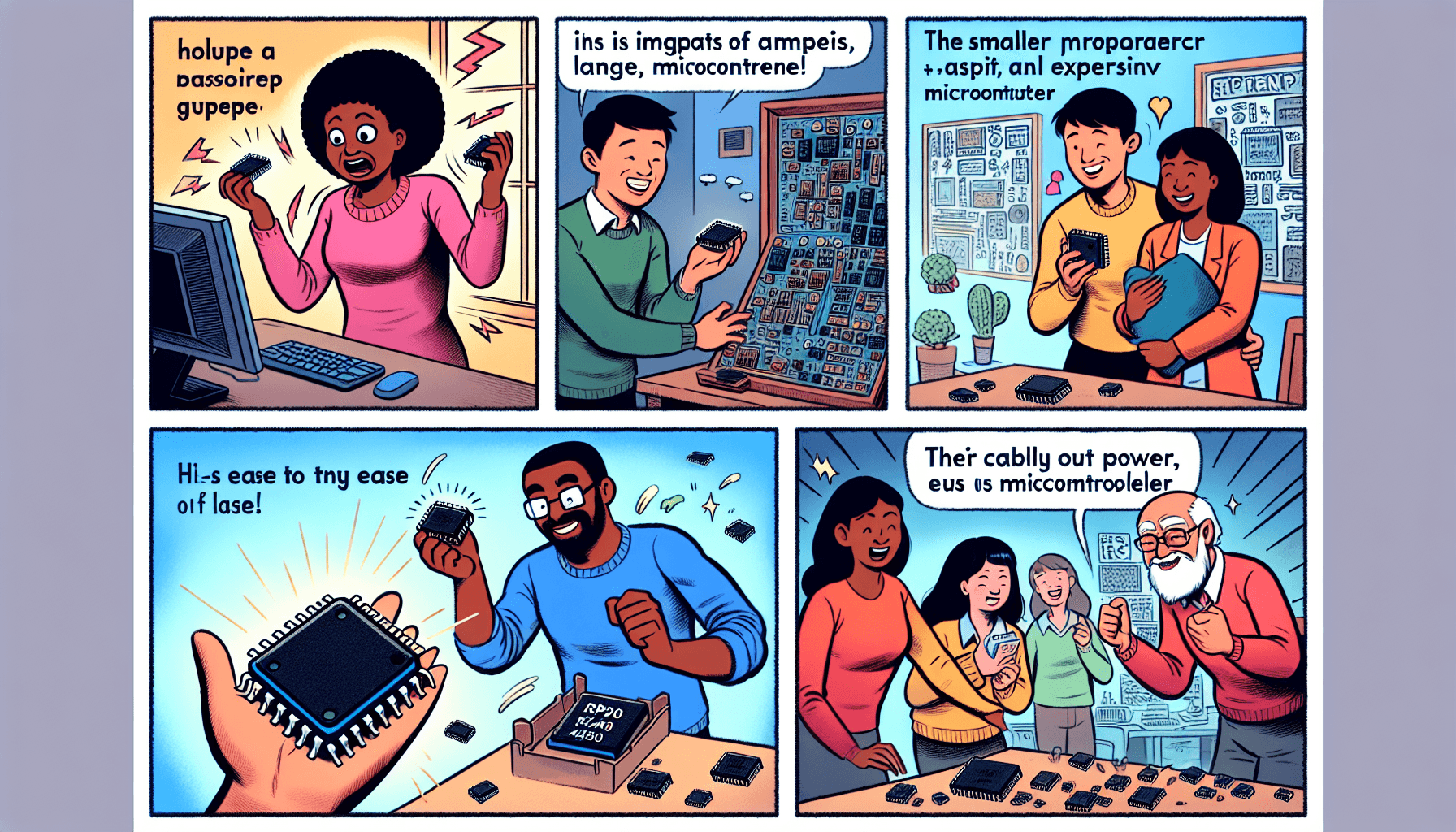Today in Edworking News: Let's Talk About the RP2040
The RP2040 is a microcontroller made by Raspberry Pi. Unlike their more widely known products, the RP2040 is meant to be embedded in consumer electronics. It's cheap and available in tens of thousands for immediate dispatch from your local Mouser. I really like the RP2040 and I want you to know why.
 Just the Right Size
Just the Right Size
Here is the Mouser stock for a microcontroller manufacturer Espressif: Dozens of slightly different controllers. Why? Unlike software, physical products cost money to manufacture. Every cent saved on a gizmo's components is a cent in earnings, which adds up when the gizmos are manufactured by the million. This creates an incentive to pick a microcontroller that is only just powerful enough (to "right size" it), and usually microcontroller manufacturers are happy to help, offering dozens of variations of the same microcontroller.
Here is the Mouser stock for Raspberry Pi: (This is the same microcontroller, just two different packaging options).
 What? … As Long As It's Black
What? … As Long As It's Black
Raspberry Pi pulled a Henry Ford and boldly went with just one microcontroller. There is no choice, no right sizing, but that might be OK! An RP2040 costs ~70 cents, and not all gizmos are produced by the million. In return, Raspberry Pi ensured that everyone on the planet works with the same part. Compared to more traditional wide lineups, there is a disproportionate number of StackExchange questions, blog posts (including this one), experience, Github issues, libraries, and tools for the RP2040. This is a good tradeoff for projects like Late Mate, which are likely to save more on development costs than on parts.

Description: The RP2040 pinout demonstrates the diverse I/O capabilities that make it highly versatile.

 Down the Stack
Down the Stack
This single model pragmatism is evident in the choices Raspberry Pi made for the microcontroller itself. It is designed to be a jack-of-all-trades, trading "excellent" for "sufficient and flexible":
- Less conventionally, the RP2040 comes with a peripheral called "PIO" for Programmable Input/Output. It's like two tiny coprocessors that can execute your IO fast, with precise timing, and without spending CPU time. Some cool things people do with PIO:
- Drive LED matrices
- Generate precise PWM signals
- Emulate protocols
The RP2040 is impossible to brick. It comes with a read-only bootloader that can either mount as a USB mass storage device (firmware updates can just be copied to the "storage device"), or use its own simple USB protocol. In the same pragmatic vein, the RP2040 doesn't engage in security theater. Protecting the firmware from a dedicated attacker is nearly impossible, but there are complexity and DX costs to trying, so I'm glad Raspberry Pi made the call.
I just love the deliberate design of this little square of silicon. When I work with it, I can see how smart people thought hard about the niche the RP2040 is in and drove the tradeoffs accordingly. As an engineer aspiring to be good someday, I appreciate it.
Edworking is the best and smartest decision for SMEs and startups to be more productive. Edworking is a FREE superapp of productivity that includes all you need for work powered by AI in the same superapp, connecting Task Management, Docs, Chat, Videocall, and File Management. Save money today by not paying for Slack, Trello, Dropbox, Zoom, and Notion.

 Remember These 3 Key Ideas for Your Startup
Remember These 3 Key Ideas for Your Startup
- Standardization Over Customization: Using a unified microcontroller like the RP2040 can significantly reduce development time and costs. It creates a common platform that has extensive supporting resources, making it easier to troubleshoot and optimize your products.
- Flexibility and Pragmatism in Design: The RP2040 offers versatile I/O capabilities and a robust, unbrickable bootloader. This makes it an excellent choice for diverse applications, from driving LED matrices to emulating communication protocols, while reducing the complexity usually associated with multiple hardware variations.
- Cost-Effective Scalability: With a price point around 70 cents and wide availability, the RP2040 presents an economical solution for producing gadgets at scale without sacrificing quality or functionality. This can provide a significant competitive advantage for startups looking to scale efficiently.
For more information on the RP2040, you can refer to this detailed Raspberry Pi blog post.
For more details, see the original source.






